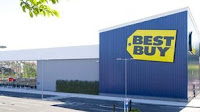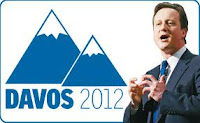News and Trends Analysis
End of "High Street Retail" As We Know It…..
Davos 2012 Highlights
In keeping with the tradition of opening blog posts of the year with reports from Davos, listing highlights from Davos 2012… Digital Norms
The digital age brings transparency but also increasing threats to confidentiality.
Greater and…
Davos 2012 Highlights
In keeping with the tradition of opening blog posts of the year with reports from Davos, listing highlights from Davos 2012…
 Digital Norms
Digital Norms
- The digital age brings transparency but also increasing threats to confidentiality.
- Greater and more coherent regulation is needed, but there is a vacuum of regulatory bodies.
- Corporations seeking to enter the Chinese market may be required to compromise their privacy values.
Growth and Employment Models
- The development of a human capital index can help close the gap between the skills that are available and what business requires.
- Education is the key piece in growth and employment.
- Entrepreneurship should be actively encouraged.
- Governments should rethink policies that impede the global mobility of talent.
- Social protection and collective bargaining rights promote growth.
Leadership and Innovation Models
- Accelerated communications and public demand for immediate information complicate the tasks of modern leaders.
- The new brand of leader needs to respond both to his/her domestic constituency and to a global one as well.
- Trust is the key issue and establishing trust depends on integrity, openness and commitment.
- Social change is being driven by technology, and while leaders might not understand all aspects, success depends on picking subordinates who do.
Social and Technological Models
- New technologies offer many benefits, but also raise serious social, political, legal and ethical issues.
- Developments in brain science promise help for people suffering from Parkinson’s Disease, depression and other disorders.
- People can now customize technology to meet their individual needs and desires.
- The gap between scientific and technological progress and the understanding of the general public is growing. New media can provide platforms for education, discussion and debate on the issues raised by advances in science and technology.
The Future Enterprise Model
- If managers want to influence behaviour, they should start by building a favourable working environment.
- Three new major elements have emerged in the operating environments of enterprises in the last decade: greater demands from stakeholders, greater connectivity and faster change.
- Old management values remain important but must be re-emphasized.
- Decisions can often be implemented provisionally and tweaked along the way.
Sustainability and Resource Models
- Modelling and future analyses have the potential to help governments understand complexity.
- Technology is making possible the production of biofuels and polymers by various bacteria.
- China can be looked to as a role model in the energy sector.
- Food security is interlinked with other sectors: land, energy and water; managing this nexus is critical.
- Moving forward to meet today’s challenges – and seizing the opportunities presented by new technologies – will require political leadership.
Innovation Ecosystems 2.0
- The focus of innovation is moving from the enterprise to national and transnational levels.
- Some 50 countries have national innovation agencies and chief innovation officers responsible for driving innovation strategies.
- Innovation is more than a process; it is an ecosystem with multiple stakeholders.
- The global agenda on innovation needs to address global challenges.
Shaping New Models with Technology Pioneers
- Advances in educational technology will rapidly quadruple the number of people with access to full-time learning, causing a new revolution in education.
- The ability to monitor and analyse a body’s biomarkers using advanced molecular techniques will lead to a fundamental change in how we discover, approve and pay for drugs.
- The Internet was built to have a maximum of 3 billion devices connected to it. Capacity is running out and security is not robust.
Source – World Economic Forum
Davos 2012 Highlights
In keeping with the tradition of opening blog posts of the year with reports from Davos, listing highlights from Davos 2012…
 Digital Norms
Digital Norms
- The digital age brings transparency but also increasing threats to confidentiality.
- Greater and more coherent regulation is needed, but there is a vacuum of regulatory bodies.
- Corporations seeking to enter the Chinese market may be required to compromise their privacy values.
Growth and Employment Models
- The development of a human capital index can help close the gap between the skills that are available and what business requires.
- Education is the key piece in growth and employment.
- Entrepreneurship should be actively encouraged.
- Governments should rethink policies that impede the global mobility of talent.
- Social protection and collective bargaining rights promote growth.
Leadership and Innovation Models
- Accelerated communications and public demand for immediate information complicate the tasks of modern leaders.
- The new brand of leader needs to respond both to his/her domestic constituency and to a global one as well.
- Trust is the key issue and establishing trust depends on integrity, openness and commitment.
- Social change is being driven by technology, and while leaders might not understand all aspects, success depends on picking subordinates who do.
Social and Technological Models
- New technologies offer many benefits, but also raise serious social, political, legal and ethical issues.
- Developments in brain science promise help for people suffering from Parkinson’s Disease, depression and other disorders.
- People can now customize technology to meet their individual needs and desires.
- The gap between scientific and technological progress and the understanding of the general public is growing. New media can provide platforms for education, discussion and debate on the issues raised by advances in science and technology.
The Future Enterprise Model
- If managers want to influence behaviour, they should start by building a favourable working environment.
- Three new major elements have emerged in the operating environments of enterprises in the last decade: greater demands from stakeholders, greater connectivity and faster change.
- Old management values remain important but must be re-emphasized.
- Decisions can often be implemented provisionally and tweaked along the way.
Sustainability and Resource Models
- Modelling and future analyses have the potential to help governments understand complexity.
- Technology is making possible the production of biofuels and polymers by various bacteria.
- China can be looked to as a role model in the energy sector.
- Food security is interlinked with other sectors: land, energy and water; managing this nexus is critical.
- Moving forward to meet today’s challenges – and seizing the opportunities presented by new technologies – will require political leadership.
Innovation Ecosystems 2.0
- The focus of innovation is moving from the enterprise to national and transnational levels.
- Some 50 countries have national innovation agencies and chief innovation officers responsible for driving innovation strategies.
- Innovation is more than a process; it is an ecosystem with multiple stakeholders.
- The global agenda on innovation needs to address global challenges.
Shaping New Models with Technology Pioneers
- Advances in educational technology will rapidly quadruple the number of people with access to full-time learning, causing a new revolution in education.
- The ability to monitor and analyse a body’s biomarkers using advanced molecular techniques will lead to a fundamental change in how we discover, approve and pay for drugs.
- The Internet was built to have a maximum of 3 billion devices connected to it. Capacity is running out and security is not robust.
Source – World Economic Forum
Multi-Channel Retailing Takes a new Meaning with Retail Apps
Retail Reference Architecture, it’s evolution and real-life pragmatic implementations happens to be one of my key interest area. So far on this blog I have discussed the concept of Retail Reference Architecture, proposed a concise yet complete Simplifi…
Multi-Channel Retailing Takes a new Meaning with Retail Apps
Since summer ASOS has launched its App for the Apple range of mobile devices. The new service has been designed for iPhone, iPad and iPod Touch users, and along with the function to ‘save for later’ any item of interest sold by the trader, the app also includes a locator for local drop-off points for customers looking to return unwanted purchases.
Free to download, the new app lets you browse and shop directly from fashion editorials, very similar to Net-à-Porter’s. The app comes with trend reports and also contains content originally produced for the online version of the Asos magazine as well as exclusive footage and features such as video and 360-degree views of clothing items. The iPad app is available for free from the App Store since August this year with both Android and iPhone versions scheduled to launch by the close of 2011.
Multi-Channel Retailing Takes a new Meaning with Retail Apps
Since summer ASOS has launched its App for the Apple range of mobile devices. The new service has been designed for iPhone, iPad and iPod Touch users, and along with the function to ‘save for later’ any item of interest sold by the trader, the app also includes a locator for local drop-off points for customers looking to return unwanted purchases.
Free to download, the new app lets you browse and shop directly from fashion editorials, very similar to Net-à-Porter’s. The app comes with trend reports and also contains content originally produced for the online version of the Asos magazine as well as exclusive footage and features such as video and 360-degree views of clothing items. The iPad app is available for free from the App Store since August this year with both Android and iPhone versions scheduled to launch by the close of 2011.
Gartner: Top 10 Strategic Technologies for 2012
Gartner recently published the top 10 technologies and trends that will be strategic for most organizations in 2012. Gartner defines a strategic technology as one with the potential for significant impact on the enterprise in the next three years. It m…
Gartner: Top 10 Strategic Technologies for 2012
Gartner recently published the top 10 technologies and trends that will be strategic for most organizations in 2012. Gartner defines a strategic technology as one with the potential for significant impact on the enterprise in the next three years. It may be an existing technology that has matured and/or become suitable for a wider range of uses. It may also be an emerging technology that offers an opportunity for strategic business advantage for early adopters or with potential for significant market disruption in the next five years. These technologies impact the organization’s long-term plans, programs and initiatives. They are as following;
Media Tablets and Beyond. Users can choose between various form factors when it comes to mobile computing. No single platform, form factor or technology will dominate and companies should expect to manage a diverse environment with two to four intelligent clients through 2015.
Mobile-Centric Applications and Interfaces. The user interface (IU) paradigm in place for more than 20 years is changing. UIs with windows, icons, menus, and pointers will be replaced by mobile-centric interfaces emphasizing touch, gesture, search, voice and video.
Contextual and Social User Experience. Context-aware computing uses information about an end-user or objects environment, activities, connections and preferences to improve the quality of interaction with that end-user or object.
Internet of Things. The Internet of Things (IoT) is a concept that describes how the Internet will expand as sensors and intelligence are added to physical items such as consumer devices or physical assets and these objects are connected to the Internet.
App Stores and Marketplaces. Application stores by Apple and Android provide marketplaces where hundreds of thousands of applications are available to mobile users. Gartner forecasts that by 2014, there will be more than 70 billion mobile application downloads from app stores every year.
Next-Generation Analytics. Analytics is growing along three key dimensions:
-
From traditional offline analytics to in-line embedded analytics.
-
From analyzing historical data to explain what happened to analyzing historical and real-time data from multiple systems to simulate and predict the future.
-
from structured and simple data analyzed by individuals to analysis of complex information of many types (text, video, etc…) from many systems
Big Data. The size, complexity of formats and speed of delivery exceeds the capabilities of traditional data management technologies; it requires the use of new or exotic technologies simply to manage the volume alone.
In-Memory Computing. Gartner sees huge use of flash memory in consumer devices, entertainment equipment and other embedded IT systems. In addition, it offers a new layer of the memory hierarchy in servers that has key advantages — space, heat, performance and ruggedness among them.
Extreme Low-Energy Servers. The adoption of low-energy servers potentially delivering 30 times or more processors in a particular server unit with lower power consumption vs. current server approaches.
Cloud Computing. Cloud is a disruptive force and has the potential for broad long-term impact in most industries. While the market remains in its early stages in 2011 and 2012, it will see the full range of large enterprise providers fully engaged in delivering a range of offerings to build cloud environments and deliver cloud services.
“These top 10 technologies will be strategic for most organizations, and IT leaders should use this list in their strategic planning process by reviewing the technologies and how they fit into their expected needs,” said David Cearley, vice president and Gartner fellow.
The complete related Gartner press release can be accessed here.
Gartner: Top 10 Strategic Technologies for 2012
Gartner recently published the top 10 technologies and trends that will be strategic for most organizations in 2012. Gartner defines a strategic technology as one with the potential for significant impact on the enterprise in the next three years. It may be an existing technology that has matured and/or become suitable for a wider range of uses. It may also be an emerging technology that offers an opportunity for strategic business advantage for early adopters or with potential for significant market disruption in the next five years. These technologies impact the organization’s long-term plans, programs and initiatives. They are as following;
Media Tablets and Beyond. Users can choose between various form factors when it comes to mobile computing. No single platform, form factor or technology will dominate and companies should expect to manage a diverse environment with two to four intelligent clients through 2015.
Mobile-Centric Applications and Interfaces. The user interface (IU) paradigm in place for more than 20 years is changing. UIs with windows, icons, menus, and pointers will be replaced by mobile-centric interfaces emphasizing touch, gesture, search, voice and video.
Contextual and Social User Experience. Context-aware computing uses information about an end-user or objects environment, activities, connections and preferences to improve the quality of interaction with that end-user or object.
Internet of Things. The Internet of Things (IoT) is a concept that describes how the Internet will expand as sensors and intelligence are added to physical items such as consumer devices or physical assets and these objects are connected to the Internet.
App Stores and Marketplaces. Application stores by Apple and Android provide marketplaces where hundreds of thousands of applications are available to mobile users. Gartner forecasts that by 2014, there will be more than 70 billion mobile application downloads from app stores every year.
Next-Generation Analytics. Analytics is growing along three key dimensions:
-
From traditional offline analytics to in-line embedded analytics.
-
From analyzing historical data to explain what happened to analyzing historical and real-time data from multiple systems to simulate and predict the future.
-
from structured and simple data analyzed by individuals to analysis of complex information of many types (text, video, etc…) from many systems
Big Data. The size, complexity of formats and speed of delivery exceeds the capabilities of traditional data management technologies; it requires the use of new or exotic technologies simply to manage the volume alone.
In-Memory Computing. Gartner sees huge use of flash memory in consumer devices, entertainment equipment and other embedded IT systems. In addition, it offers a new layer of the memory hierarchy in servers that has key advantages — space, heat, performance and ruggedness among them.
Extreme Low-Energy Servers. The adoption of low-energy servers potentially delivering 30 times or more processors in a particular server unit with lower power consumption vs. current server approaches.
Cloud Computing. Cloud is a disruptive force and has the potential for broad long-term impact in most industries. While the market remains in its early stages in 2011 and 2012, it will see the full range of large enterprise providers fully engaged in delivering a range of offerings to build cloud environments and deliver cloud services.
“These top 10 technologies will be strategic for most organizations, and IT leaders should use this list in their strategic planning process by reviewing the technologies and how they fit into their expected needs,” said David Cearley, vice president and Gartner fellow.
The complete related Gartner press release can be accessed here.
6 out of Top 10 Global Brands are IT Companies……is IT COOL Again?
Is Information Technology a COOL Industry to be in? Has “IT” – the silent back-office contributor to the business success finally found it’s rightful place in the Industrial Hierarchy? Well don’t know about that but for consecutive years now a …





